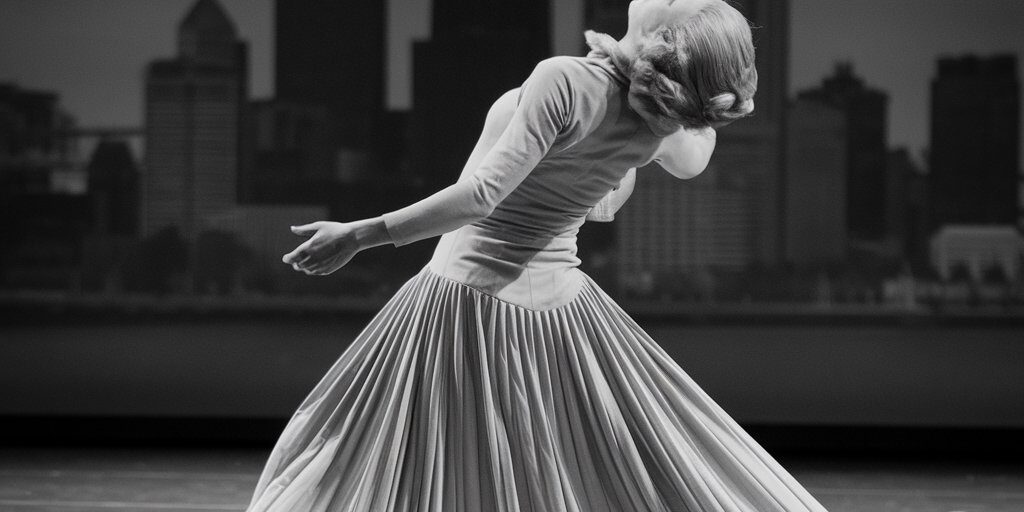Introduction: A Revolutionary Spirit from Pittsburgh
Before she became a towering figure in the world of modern dance, Martha Graham was just a young girl from Allegheny City, Pennsylvania — now part of Pittsburgh’s North Side. Born in 1894, Graham would go on to revolutionize dance, transforming it from delicate ballet into an expressive, visceral art form that told raw, human stories.
Known as the “Mother of Modern Dance,” Martha Graham shaped American culture and influenced generations of artists, choreographers, and performers. Her work remains a staple of global stages, her movement vocabulary now part of dance history. Yet few know that her pioneering spirit was forged in Pittsburgh.
Early Life and Pittsburgh Roots
Martha Graham was born on May 11, 1894, the third of four children. Her father, Dr. George Graham, was an alienist(early psychiatrist), deeply interested in how the body reflected emotions — a concept that would later influence Martha’s choreographic work.
Though Graham’s family relocated to California during her youth, her Pittsburgh upbringing left a lasting impression. The city’s rugged landscapes, immigrant communities, and industrial backbone exposed her early to the idea of resilience and the power of the human body — themes that would dominate her art.
Breaking Free: Martha Graham’s Dance Philosophy
Graham’s dance journey began in earnest when she studied at the Denishawn School in Los Angeles, founded by Ruth St. Denis and Ted Shawn. There, she learned traditional ballet and more exotic performance styles. But by the 1920s, Graham grew restless. She rejected the ornate, ethereal nature of ballet and set out to create a new movement language — one rooted in earth, breath, and emotion.
Graham believed that movement should come from deep within the body, expressing the full range of human emotion — joy, rage, grief, and desire. Her technique, famously built on contraction and release, became the bedrock of modern dance.
“Great dancers are not great because of their technique, they are great because of their passion.” — Martha Graham
In 1926, she founded the Martha Graham Dance Company, the oldest continuous modern dance company in America.
Career Highlights and Cultural Impact
Graham’s body of work is staggering — over 180 choreographed pieces, each exploring psychological, political, and social themes. Unlike ballet, which often focused on fairy tales and romance, Graham’s dances tackled mythology, war, love, death, and the complexity of the human psyche.
Signature Works:
- “Appalachian Spring” (1944): A collaboration with composer Aaron Copland, capturing the spirit of American pioneers.
- “Lamentation” (1930): A solo piece of grief and mourning, performed in a tube-like stretch jersey — one of her most famous and haunting works.
- “Chronicle” (1936): A response to the rise of fascism in Europe, highlighting Graham’s political awareness.
Influence and Innovation:
- Graham worked with cultural giants like Aaron Copland, Isamu Noguchi, and Merce Cunningham.
- She trained legendary dancers and actors, including Bette Davis, Gregory Peck, and Mikhail Baryshnikov.
- In 1938, she became the first dancer to perform at the White House, invited by Franklin and Eleanor Roosevelt.
Awards and Honors
Martha Graham’s influence extended far beyond the dance world. She received numerous accolades, including:
- Presidential Medal of Freedom (1976)
- National Medal of Arts
- Kennedy Center Honors
Time magazine once named her “Dancer of the Century,” a title that still rings true.
Legacy: Pittsburgh’s Lasting Connection to Modern Dance
Though she left Pittsburgh as a child, Graham’s connection to the city remained symbolic. Her relentless pursuit of originality and her embrace of struggle reflected Pittsburgh’s own transformation from industrial giant to cultural powerhouse.
Pittsburgh’s dance scene today — from the Pittsburgh Ballet Theatre to countless contemporary dance troupes — owes much to the path she forged. Her style, emphasizing the raw power of the body, still resonates in studios and theaters across the city.
The Martha Graham Dance Company continues to perform globally, keeping her works alive and inspiring new generations.
Conclusion: A Legacy Written in Movement
Martha Graham did not just create dances — she created a new language for the human body. Her work gave voice to the voiceless and emotion to the seemingly inexpressible.
From her humble beginnings in Pittsburgh to the grand stages of the world, Graham showed what’s possible when one refuses to follow the rules. In every contraction and release, in every story told through movement, her Pittsburgh-born resilience endures.
“Dance is the hidden language of the soul.” — Martha Graham
Her legacy is not just one of art, but of courage — the courage to speak, to move, and to change the world.









